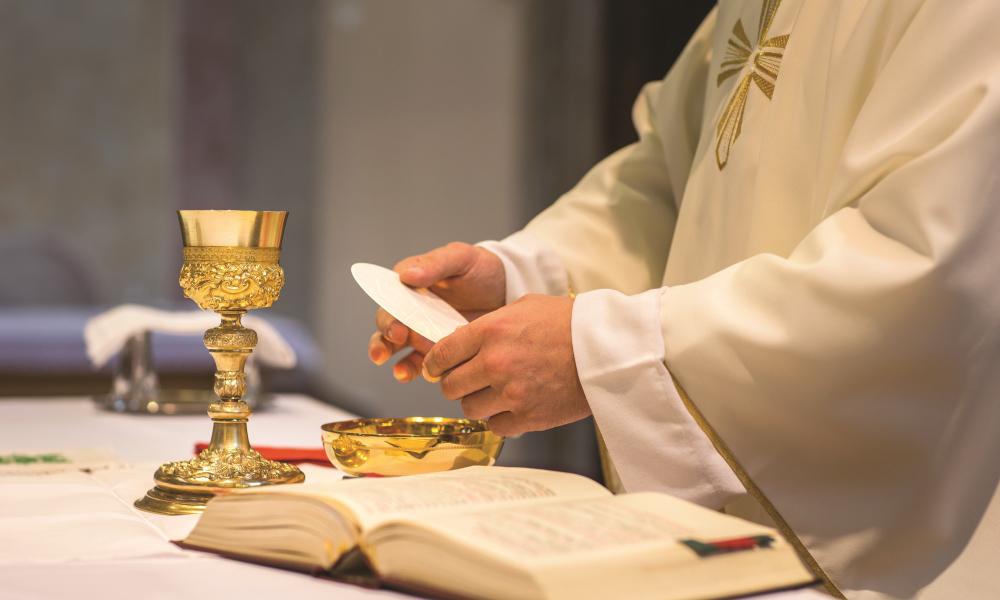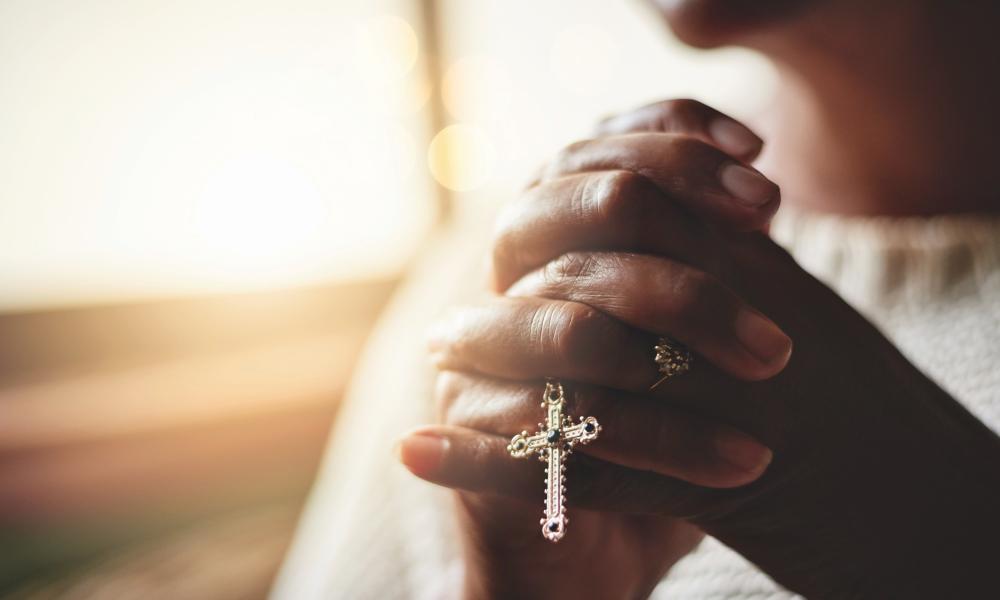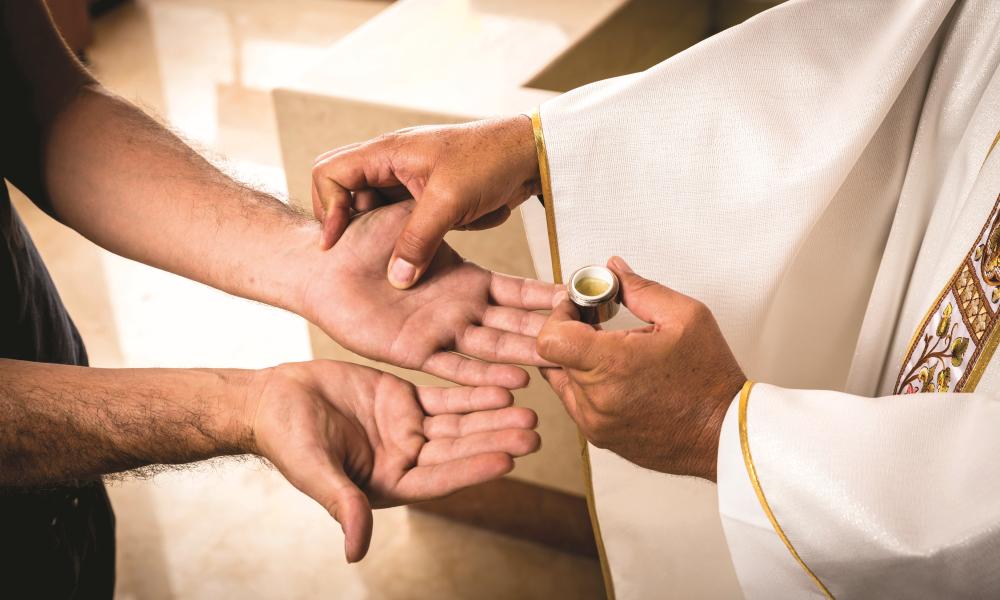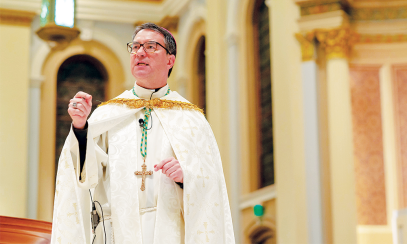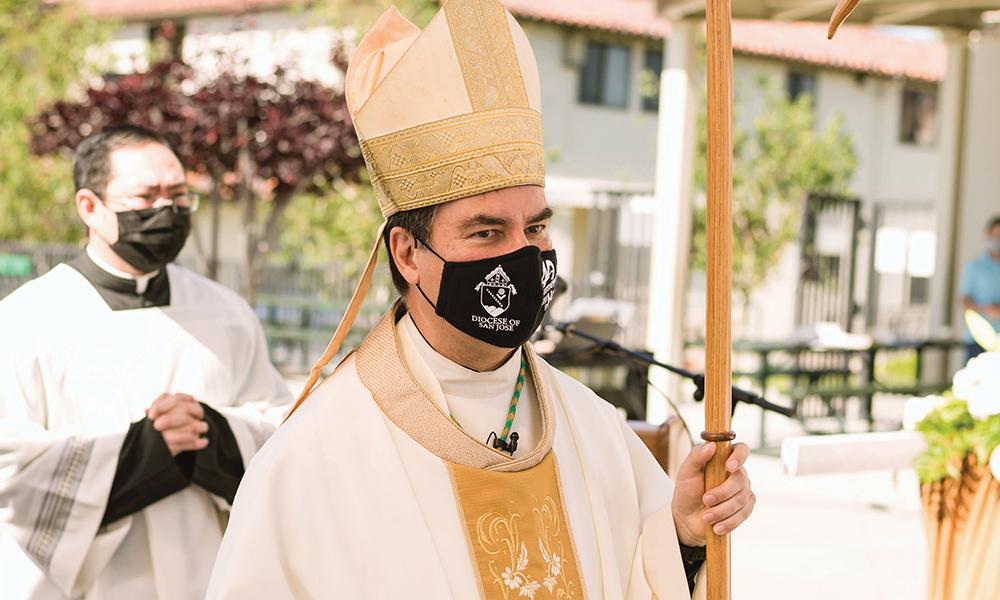
Journeying Together to Encounter, Listen and Discern
Dear Brothers and Sisters in Christ,
We have come to the end of our Diocesan Jubilee, celebrating our 40th anniversary. We also close the Year of St. Joseph, which Pope Francis providentially announced, and coincided with our Diocesan Jubilee.
Jubilee in time of Pandemic
While our celebrations were limited because of the pandemic, we made the most of them! Some participated in person, others virtually and yet others read about them or were informed by others. The important thing is that we thanked God for 40 years of faith and ministry as the Diocese of San José. We recalled the beautiful and storied past, especially in a beautiful keepsake edition of The Valley Catholic; we acknowledged the diversity of the present; and we “journeyed together in hope” with prayerful imagination towards the future.
I express my deep gratitude to Fr. Hao Dinh and the Jubilee Committee for planning and executing the various celebrations throughout the year. They had to contend with shifting COVID protocols and yet adapted joyfully and creatively.
Where do we go from here?
Now that we have joyfully celebrated—even in the midst of the challenges of the pandemic—40 years of faith and ministry in the Diocese of San José, some may understandably ask, “now what?” We now take the blessings and memories of this year and carry them to what God has in store for us in the coming year—indeed the next 10 years!
Preparation for 50th Anniversary
At the Priest Fall Convocation this past September, I invited our priests to begin to imagine what the Diocese of San José might look like in 10 years. What does God desire of us in the next 10 years? How can our parishes, schools, organizations, and ministries bring the Good News of Christ to more people?
Beginning with Prayer
To begin to prepare ourselves and our Diocese for our 50th Jubilee, I invite us all— laity, religious, and clergy—to participate in a Year of Prayer to convoke the Holy Spirit in our discernment process. The Holy Spirit inspires, strengthens, and guides the Church, and we need to listen prayerfully to the Spirit’s promptings so that our Diocese might embark on a journey of faith that is “ever ancient, ever new.” Pope Francis reminds us that God is God of surprises. It is in the spirit of prayer that we can prepare our hearts and our “spiritual ears” to hear his voice and to respond with courage, wonder, faith, and zeal.
We recall how Abraham, even at a rather mature age, was called to leave his home and embark on a journey led by God. Abraham was not privy to the specifics of God’s plan, but it didn’t matter: Abraham trusted God. And God indeed proved trustworthy, even though Abraham’s faith was tested to the limit!
We further recall how God attracted Moses through his fascination with the burning bush. Moses was not only overcome with the sacredness and mystery of the burning bush; he was drawn into a mission: to rescue God’s people. “I have witnessed the affliction of my people in Egypt and have heard their cry…” God declares to Moses.
We, too, are invited to witness and to hear. To hear God speaking through his people; not in Egypt, but in Silicon Valley, in Santa Clara Valley, not 4,000 years ago, but here and now. There are two upcoming opportunities for the Church to encounter and listen to God’s people here and now: the Pope’s Universal Synod and our first-ever Diocesan Synod.
Synods: A Process to Encounter, Listen and Discern
What is a Synod? A synod is a gathering of the Church, in which we seek to determine where and how the Holy Spirit is leading us at this particular time in history. A synod often has various levels of consultation and involves a process spanning several months or longer. Pope Francis has given us a methodology to follow in the synodal process: to encounter each other as brothers and sisters; to listen deeply to each other, to hear each other’s stories; and then to discern what the Holy Spirit is saying to us through these encounters, stories, and experiences.
Universal Synod Pope Francis has called for a universal synod with local and universal components. We, in the Diocese of San José, will participate in this universal synod in the Spring of 2022. Pope Francis outlined two fundamental questions to guide the Synod on Synodality or “journeying together.” How does this “journeying together” take place today on different levels (from the local level to the universal level), allowing the Church to proclaim the Gospel? And “What steps is the Spirit inviting us to take to grow as a synodal Church?” I have appointed a diocesan coordinator of this important effort to encounter, listen, and discern. In the early spring of 2022, specific opportunities to encounter and listen to each other will be published in your parish bulletins, on the Diocesan website, and on our social media profiles.
Diocesan Synod Not only will we participate in the universal synod in a few months, but also in preparation for our 50th anniversary, I invite us all—laity, religious, and clergy—to participate in our first Diocesan Synod, which will begin in Advent 2022. In this Diocesan Synod, I will invite us to reflect on the question, “Where does our local Church of San José need to be in 10 years to live and proclaim the Gospel of Jesus Christ effectively in Silicon Valley into the future?” Moreover, to be faithful to the mission of Jesus Christ, what do we need to do differently? What strengths can we leverage? What obstacles must we overcome? Do we need to pivot from old ministries to new ones? These are all broad questions, and I’m sure, with thoughtful prayer, there will be various and creative ideas to offer. We will surface those ideas and then enter a process of discerning the voice of the Holy Spirit amid the many voices.
The Diocesan Synod will not be a simple process. That is why I am calling for a year of prayer in preparation for this Diocesan synodal process so that our hearts might be open to the promptings of the Holy Spirit.
The Year 2031 and Our Lady of Guadalupe
During our year of prayer, I also invite us to reflect on the fact that our 50th anniversary as a Diocese will coincide with the 500th anniversary of Mary’s apparitions in what is now Mexico City. In those apparitions, Mary models what we now refer to as the “new evangelization,” important for us to consider as we look to the future of our Diocese.
Many of you are familiar with the events, circumstances, and context of the apparitions of Mary to St. Juan Diego in 1531. In summary, it had been just over a decade since the arrival of the Spaniards to the “New World” and what is now Mexico. Clergy arrived with the explorers and began to evangelize with the known methods of the day. The success of the indigenous population accepting the faith was limited until the time of Mary’s apparitions in 1531.
Mary used new and very different methods to invite the indigenous people to the faith. First, she spoke to Juan Diego in his own language, Nahuatl. The décor of her dress and veil was imprinted with the hieroglyphics used by the indigenous, so her message was readily available to the native populations. She spoke to him with motherly tenderness; there was even music in the background and birds singing! All of this points to a context of respect, peace, and joy as Mary brought the message of the Gospel. Upon his visit to the Shrine of Our Lady of Guadalupe, Pope Francis would state, “no one could be left out of the building of that other shrine, the shrine of life, the shrine of our communities, our societies and our cultures.”
Mary requested that a temple be built on that very hillside on which she appeared to Juan Diego, a 57-year-old married man. When Mary requested that Juan take that message to the local bishop, Juan objected, noting that he was not an educated person, that the bishop likely would not listen to him. Yet, Mary stood firm and insisted, “it is most essential that you take this message to the bishop.” Mary could have appeared directly to the bishop or have chosen a more erudite person to take her message to the bishop. But Mary’s point was that it is essential that each of us, no matter our background or status in life, be involved in the work of evangelization.
After the bishop did, in fact, believe Juan Diego’s message from Mary and venerate the miraculous image of Mary that she left on Juan’s cloak, Juan Diego would become, effectively, the catechist and evangelizer of the native peoples, as he recounted to them his conversations with Mary and her message of love, tenderness, motherly concern, pointing to her Son, and inviting the native populations to worship the One True God. Millions of natives converted to the faith through the witness of one of their own, St. Juan Diego, and the message of Mary, who inculturated the message of the Gospel and spoke convincingly to Juan Diego with the tender, loving message of Jesus Christ. She, moreover, left her miraculous image, which served effectively as a codex for the natives, confirming the message shared with Juan Diego by the Blessed Mother.
In recent decades the Church has spoken of the “New Evangelization,” proclaiming the Gospel of Jesus Christ with new methods, new language, and new vigor. Mary, Our Lady of Guadalupe, predated the Church’s efforts at the New Evangelization by 500 years! She used a very different and effective method, a new language of tenderness, truth, and beauty, and a vigor that changed the life, self-perception, and dignity of a poor indigenous layman, who became an evangelizer and catechist to his own people.
While Mary used new methods, language, and vigor, she nonetheless respected the structure of the Church, which Jesus had established, namely the role of the bishop. She wanted Juan to take her message to the hierarchy of the Church so that both laity and clergy might fulfill their respective roles. The work of the baptized layperson, while distinct from that of the clergy, and working in communion with the latter, is equal in dignity and importance.
Thus, I ask, what can we, 500 years later, learn from the methodology of Mary?
How can we proclaim the truth of the Gospel in the 21st century in Silicon Valley with tenderness, beauty and love, such that people’s hearts are touched and their lives transformed as they come to know and love the One True God and his Son, Jesus Christ? Let this be part of our prayer during the next year.
As Mary was understandably overwhelmed when the Angel Gabriel shared with her the message of God, that she was to be the Mother of God, in peace and joy, she was eventually able to say, “Be it done unto me according to thy word.”
May we accept the Holy Spirit’s invitation to embark on this journey of synods and participate, like St. Juan Diego, in delivering the message of the transforming love of Jesus Christ!
Yours in Christ,
Oscar Cantú
Bishop Oscar Cantú

